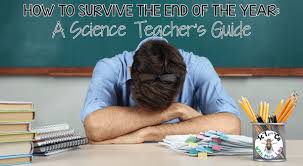Introduction
We all have that one teacher who stands out in our memories for all the wrong reasons. The teacher who made our school days feel like a never-ending nightmare and whose classroom we dreaded entering. This article delves into the experiences and emotions tied to having the worst teacher ever, exploring what made them so unbearable, the impact on our learning, and the lessons learned from the ordeal.
The First Impression

The Initial Encounter
First impressions are lasting, and meeting my worst teacher ever was no exception. I remember walking into the classroom with a mix of curiosity and apprehension. The room was stark, devoid of any warmth or welcoming decor. As soon as the teacher walked in, their stern demeanor and cold gaze set the tone for what was to come.
The Atmosphere of Fear
From the onset, the atmosphere in the classroom was one of fear and intimidation. The teacher’s approach was authoritative, leaving no room for questions or discussions. This oppressive environment made it difficult to engage with the material or feel comfortable in the classroom.
The Teaching Style
The Monotone Lectures
One of the most challenging aspects of having my worst teacher ever was their teaching style. Lectures were delivered in a monotone voice, devoid of any enthusiasm or passion. This made even the most interesting topics seem dull and lifeless.
Lack of Engagement
Engagement was non-existent. The teacher would simply read from the textbook, expecting us to absorb the information passively. There was no effort to make the lessons interactive or to relate the material to real-life situations, making it hard to stay interested.
The Strict Discipline
Also Read Celebrities Who Don’t Believe In God – Believing in Beliebers
Zero Tolerance for Mistakes
Mistakes were not tolerated in this classroom. The teacher had an unwavering zero-tolerance policy, which created a culture of fear. Students were afraid to ask questions or admit when they didn’t understand something, leading to a stifled learning environment.
Public Humiliation
Public humiliation was a common tactic used by this teacher to enforce discipline. Students who made mistakes or failed to answer questions correctly were often ridiculed in front of their peers. This not only damaged our self-esteem but also created a hostile and unsupportive classroom atmosphere.
The Impact on Learning
Loss of Interest
The uninspiring teaching methods and harsh discipline quickly led to a loss of interest in the subject. What could have been an exciting learning experience turned into a dreaded chore. Many of us found ourselves disengaged and unmotivated.
Decline in Performance
Unsurprisingly, our academic performance began to decline. The lack of encouragement and support, combined with the fear of making mistakes, hindered our ability to learn and perform well in assessments. This was particularly frustrating for students who had previously shown interest and aptitude in the subject.
The Emotional Toll
Anxiety and Stress
The constant pressure and fear of humiliation took a significant emotional toll on us. Many students, including myself, experienced heightened levels of anxiety and stress. This not only affected our performance in this particular class but also had a ripple effect on our overall school experience.
Diminished Self-Esteem
Repeated public humiliations and the constant fear of being wrong eroded our self-esteem. We began to doubt our abilities and questioned our worth, which impacted our confidence both inside and outside the classroom.
Attempts to Cope
Seeking Help from Peers
In an attempt to cope with the difficult situation, we turned to each other for support. Study groups became a refuge where we could discuss the material without fear of judgment. These sessions helped us regain some sense of control over our learning.
Speaking to Other Teachers
Some of us sought help from other teachers who were more approachable and understanding. They provided guidance and support, helping us navigate the challenges we faced in the problematic class. Their empathy and encouragement were a stark contrast to the harshness we experienced daily.
The Role of Parents
Communicating Concerns
Parents played a crucial role in addressing the issues we faced. They communicated their concerns to the school administration, highlighting the negative impact the teacher’s methods had on our learning and well-being. Their advocacy was instrumental in bringing about change.
Providing Emotional Support
At home, our parents provided much-needed emotional support. They reassured us of our worth and capabilities, helping to rebuild our shattered self-esteem. Their unwavering belief in us was a source of strength during this challenging time.
The Administration’s Response
Evaluating the Teacher
The administration took our parents’ concerns seriously and began evaluating the teacher’s performance. This involved observing classes and gathering feedback from students and parents. The goal was to assess whether the teacher’s methods were in line with the school’s educational standards.
Implementing Changes
Based on their findings, the administration implemented changes to address the issues. This included providing additional training for the teacher and introducing more supportive and engaging teaching methods. These changes aimed to create a more positive and effective learning environment.
The Lessons Learned
The Importance of Good Teaching
One of the most important lessons we learned from this experience was the critical role good teaching plays in education. A teacher’s approach can make or break a student’s interest in a subject. Good teaching involves not only imparting knowledge but also inspiring and encouraging students to learn.
The Power of Resilience
Despite the challenges, we learned the power of resilience. We discovered that even in the face of adversity, we could find ways to cope and persevere. This resilience has served us well in other aspects of our lives, reminding us that we can overcome difficult situations.
The Transformative Power of Positive Educators
The Contrast with Good Teachers
The experience with my worst teacher ever highlighted the transformative power of positive educators. Good teachers create a supportive and engaging learning environment, fostering curiosity and a love for learning. Their influence extends beyond academics, shaping our attitudes and outlook on life.
Examples of Positive Experiences
In contrast to the negative experiences, we also had teachers who inspired us and made learning enjoyable. These teachers used interactive methods, encouraged questions, and provided constructive feedback. Their passion for teaching and genuine care for their students made a lasting impact.
Moving Forward
Using the Experience as Motivation
Rather than dwelling on the negative experience, we used it as motivation to strive for better. It taught us the importance of advocating for ourselves and seeking out positive influences. We became more proactive in our learning, taking responsibility for our education.
Helping Others
Our experience also inspired us to help others facing similar challenges. We shared our stories and offered support to younger students, guiding them on how to navigate difficult situations. By doing so, we aimed to create a more supportive and understanding school community.
Conclusion
Having the worst teacher ever was undoubtedly a challenging experience, but it also provided valuable lessons and insights. It underscored the importance of good teaching, the power of resilience, and the transformative impact of positive educators. While the experience was difficult, it ultimately shaped us into stronger and more empathetic individuals. As we move forward, we carry these lessons with us, using them to inspire and support others on their educational journeys.
FAQs
1. How can students cope with a difficult teacher?
Students can cope by seeking support from peers, communicating with other teachers or school counselors, and discussing concerns with parents. It’s important to stay focused on learning and not let negative experiences undermine self-esteem.
2. What should parents do if their child has a problematic teacher?
Parents should communicate their concerns to the school administration, providing specific examples of the issues. They should also offer emotional support to their child and encourage them to remain resilient.
3. Can a bad teacher impact a student’s future?
While a bad teacher can negatively affect a student’s experience and performance in the short term, resilience and support from others can help mitigate long-term impacts. Positive experiences and personal determination play crucial roles in a student’s overall success.
4. What are the qualities of a good teacher?
A good teacher is passionate about their subject, engages students through interactive and relatable methods, provides constructive feedback, and creates a supportive learning environment. They inspire and motivate students to learn and grow.
5. How can schools support teachers to improve their methods?
Schools can provide professional development opportunities, mentoring from experienced educators, and constructive feedback based on classroom observations. Creating a culture of continuous improvement and support helps teachers enhance their teaching methods.
Meta Description
My worst teacher ever: Discover the journey of facing a challenging teacher, the lessons learned, and the transformative impact of positive educators.


